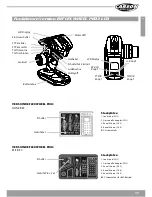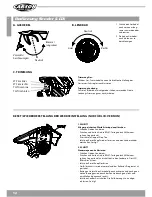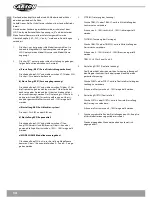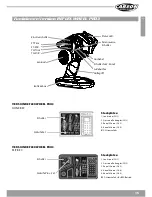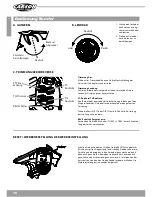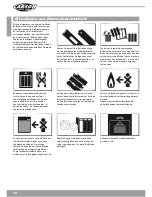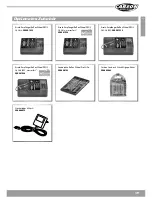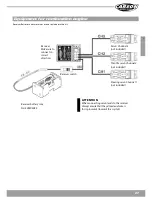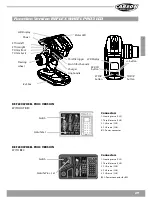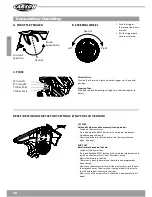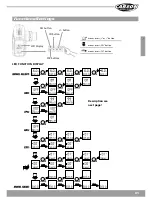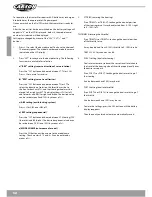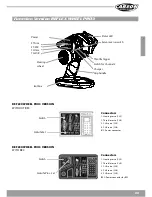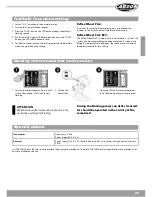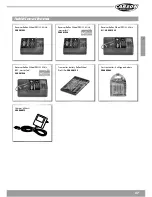
24
Safety Instructions
If they reach a high speed R/C models can be dangerous and could
cause personal injury or damage to property. The appeal of driving
an RC model depends on assembling the model accurately and
operating it with due care and attention.
1.
Follow all the warnings, and instructions in this manual.
2.
Be ”Safety Conscious“ and use your common sense at all
times.
3.
Remember that operating any R/C model demands skills
developed through proper instruction and training – they
are not acquired immediately.
4.
Don’t run risks, such as operating your model in adverse
weather or when there is a malfunction of which you are
aware.
5.
Respect the rules of the track on which you operate your
model.
6.
Running your model in the street is very dangerous to both
automobile drivers and your model. Avoid running your
model in the street.
7.
Never aim or direct your model car at any person or animal.
These model cars accelerate very quickly and can cause
serious physical injury.
8.
At any time during the operation of your model, should you
sense, feel, or observe any erratic operation or abnormality,
end your operation. Do not operate it again until you are
certain that the problems have been fixed. RC models are
not “toys” – safety precautions and forward thinking are
essential when operating a remote controlled model!
9.
Take advantage of the failsafe setting. During a breakdown
in signal transmission (such was when transmission voltage
is too weak), this setting shifts the model into a control
mode that prevents it from running away uncontrolled.
take your time to read all the way through
the pages of this booklet before starting the
installation.
Caution
Control of models is impossible with insufficient or no voltage in
the transmitter or receiver. A receiver battery that is too weak will
move the servo(s) very slowly and that may cause erratic operation
of your model. When using a car that operates both the electric
motor and receiver on the same battery, such as a BEC system,
you should discontinue operating the car when the top speed
becomes sharply reduced, otherwise loss of control will result soon
afterwards.
operating Procedure
Many publications say that the setup sequence for the transmitter
and receiver doesn’t play a role anymore with 2.4 GHz sets. However,
we recommend sticking to the sequence typical for previous sets.
• Before operation: First turn on the transmitter, then the receiver.
Lastly, connect the drive battery to the control unit.
• After operation: Disconnect the battery from the control unit.
Turn the receiver off, and then the transmitter.
• Before and after operating the transmitter, make sure that trim
settings are as desired and that all checks have been made.


